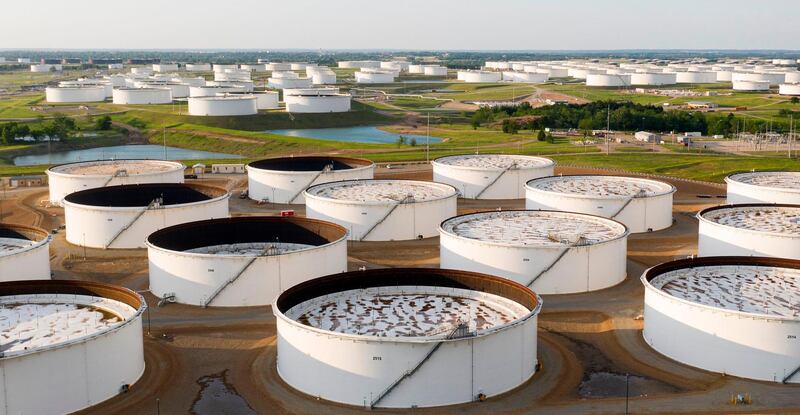Oil prices rallied to a five-month high buoyed by a decline in US crude inventory and due to perceived geopolitical risks following a massive explosion in the Lebanese capital.
Brent, the international benchmark for more than half of the world’s crude, continued gains for the fourth trading session on Wednesday, rising 3.71 per cent to trade at $46.08 per barrel at 4.15pm UAE time. West Texas Intermediate, the key gauge for US oil, also made its way back to the $40 level, gaining 3.65 per cent to trade at $43.22 per barrel.
The futures gained after the industry-funded American Petroleum Institute reported an 8.59 million-barrel draw in inventories last week.
WTI, which softened at the opening trading session this week due to Opec+ easing production cuts, rallied above $42 per barrel on Tuesday after explosions rocked Beirut. The massive explosion has left 100 dead, as of Wednesday.
"There is little clarity on whether the explosion was an accident or an attack, but investors bought oil on suspicion that the blast could threaten stability in the region and weigh on supply,” said Ipek Ozkardeskaya, senior analyst at Swissquote Bank.
Any threats to supply will have a "marginal positive impact on oil prices” in a market already flooded with crude, Ms Ozkardeskaya said in a note to investors on Wednesday.
An increase in output from Opec+ producers from August 1 is largely likely to be absorbed by members of the alliance. Saudi Arabia, the UAE and Kuwait, ended additional voluntary cuts and will direct any output increases to meet domestic demand during the searing summer months.
The alliance is cutting back 7.7 million barrels per day from August, phasing out an historic pact that saw reductions of 9.7m bpd from April until the end of July.
Oil also strengthened on the back of a weak dollar. Gold, a traditional haven asset, rallied above $2,000 per ounce amid increased geopolitical risks in the Middle East and uncertainty over further stimulus in the US.
Gold is up more than 30 per cent so far this year as the US dollar slid to a two-year low. The greenback's value has steadily declined amid a surge in coronavirus cases in the country, which has been the most affected by the pandemic. The currency’s value is down 8 per cent against a basket of currencies after its highs earlier this year. The price of crude and gold are inversely related to the US dollar: when the dollar is strong, oil prices – which are priced in the currency –remain weak.








